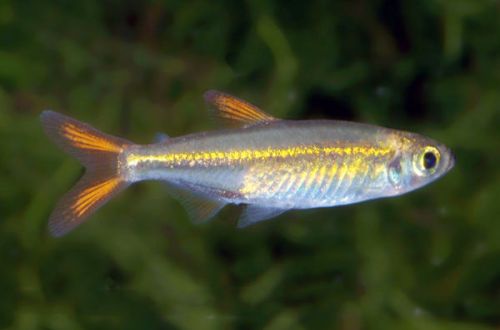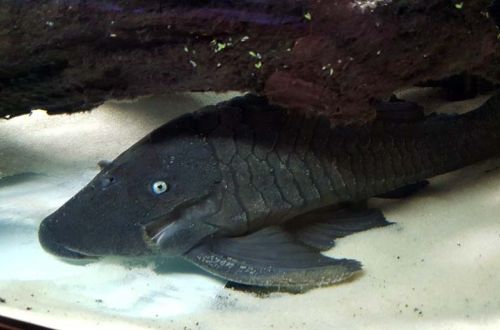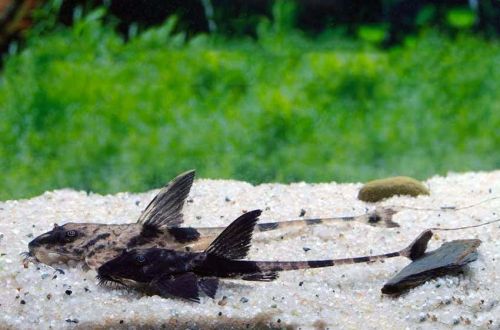
common barb
The spotted barb, scientific name Barbodes binotatus, belongs to the family Cyprinidae (Cyprinidae). Being a typical representative of the reservoirs of Southeast Asia, this species is also called the Common Barb.

Contents
Habitat
The natural range extends over vast areas from Myanmar, Thailand, peninsular Malaysia to the Greater Sunda Islands and the Philippines. Found in most major river systems in the region. Inhabits both fast mountainous sections of rivers with clean, oxygen-rich water, and stagnant swampy reservoirs overgrown with dense vegetation.
Description
The maximum recorded size of adults was 20 cm. However, in an aquarium, the fish usually do not exceed 9–11 cm in length. The coloration is gray-silver with two dark spots dampened at the bases of the dorsal fin and tail. A black stripe may be visible along the lateral line.
Sexual dimorphism is weakly expressed. Males and females have few visible differences. During the spawning period, males have characteristic carp tubercles on their heads, and females become noticeably stout, filling with caviar.
Behavior and Compatibility
Active moving fish. Peacefully tuned to the neighbors in the aquarium. Compatible with most other species of comparable size and temperament, including rough water loaches.
It is recommended to maintain in groups of 6 or more individuals. In the pack, all activity is aimed at maintaining the internal hierarchy. With a smaller number, attacks on smaller fish are possible.
Brief information:
- The volume of the aquarium – from 200 liters.
- Temperature – 23-26°C
- Value pH — 6.5–7.5
- Water hardness – soft to medium hard (1-15 dGH)
- Substrate type – any
- Lighting – subdued, moderate
- Brackish water – no
- Water movement – weak, moderate, strong
- The size of the fish is 9–11 cm.
- Food – any food
- Temperament – peaceful
- Keeping in a group of 6-8 individuals
Maintenance and care, arrangement of the aquarium
The optimal size of the aquarium for a group of 6-8 individuals starts from 200-250 liters. Since in nature the spotted Barbus inhabits various biotopes, it is considered an unpretentious and hardy species, able to live in a wide range of conditions.
The design of the aquarium is arbitrary, selected at the discretion of the aquarist or based on the needs of other fish.
The content will also not cause great difficulties. It is important to maintain the hydrochemical composition of the water within the recommended pH and dGH values and to prevent the accumulation of organic waste. The latter is ensured by the uninterrupted operation of the filtration system and the weekly replacement of part of the water (50% of the volume) with fresh water.
Food
Omnivorous species. Will accept most popular dry (flakes, pellets, etc.), frozen and live foods.
Breeding / breeding
In favorable conditions, spawning occurs regularly. Fish spawn by scattering eggs among thickets of plants or directly above the substrate. There is no parental care, so eggs and fry often become victims of adult fish.
You can protect the offspring either by organizing spawning in a separate tank, or by timely transferring eggs or fry that have appeared into it.
Fish diseases
The main threat to the health of Common barbs is unsuitable habitat. Negative factors can be poor food, dirty water, injuries, etc., against which the immune system is weakened. As a result, the fish becomes susceptible to infection.
When the first signs of the disease appear (lethargy, change in body shape, spots on the integument, refusal to eat, etc.), it is necessary to check the conditions of detention, bring all values back to normal, and only then proceed to treatment. Read more about symptoms and treatments in the Aquarium Fish Diseases section.





